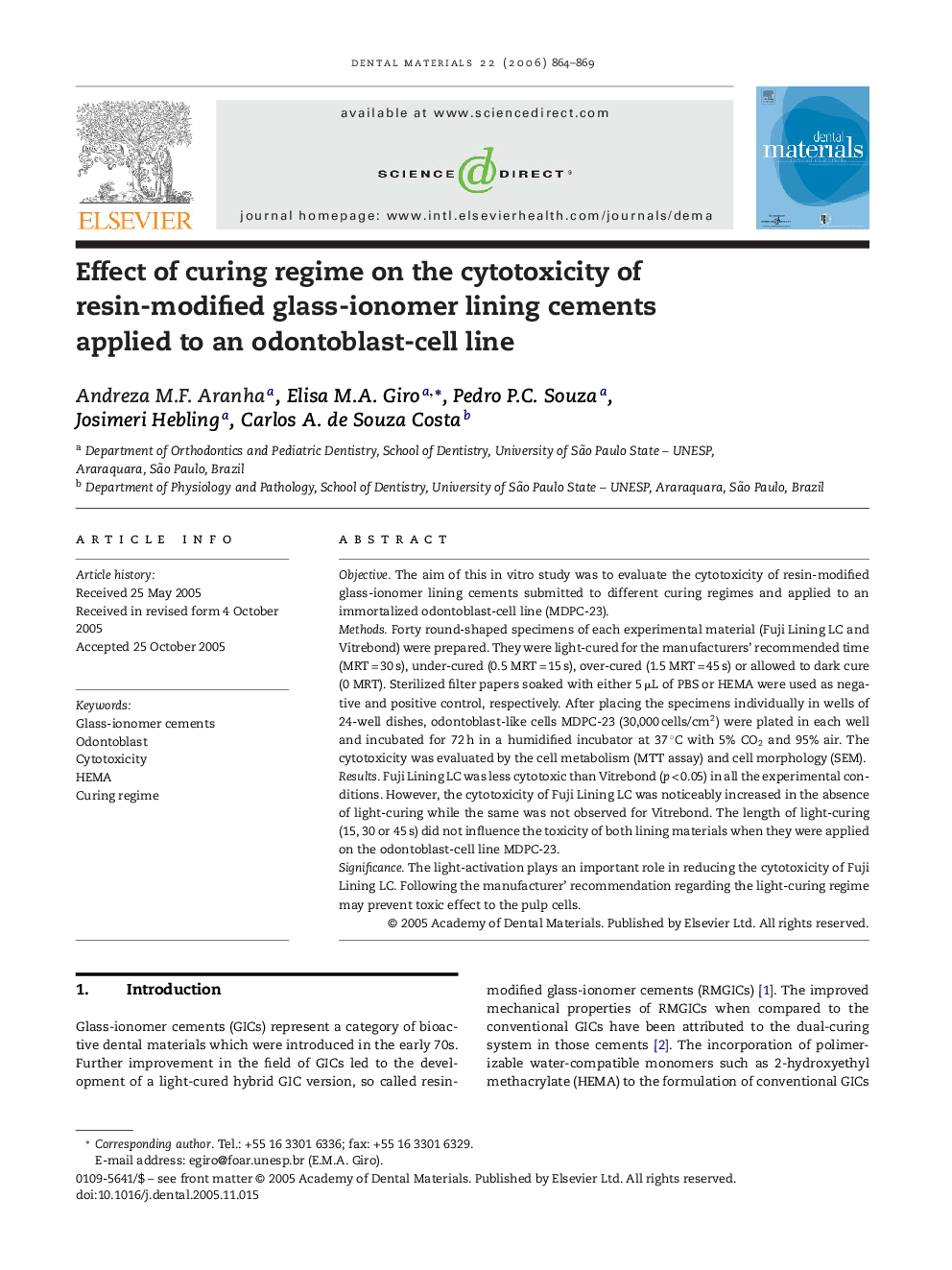| Article ID | Journal | Published Year | Pages | File Type |
|---|---|---|---|---|
| 1423122 | Dental Materials | 2006 | 6 Pages |
ObjectiveThe aim of this in vitro study was to evaluate the cytotoxicity of resin-modified glass-ionomer lining cements submitted to different curing regimes and applied to an immortalized odontoblast-cell line (MDPC-23).MethodsForty round-shaped specimens of each experimental material (Fuji Lining LC and Vitrebond) were prepared. They were light-cured for the manufacturers’ recommended time (MRT = 30 s), under-cured (0.5 MRT = 15 s), over-cured (1.5 MRT = 45 s) or allowed to dark cure (0 MRT). Sterilized filter papers soaked with either 5 μL of PBS or HEMA were used as negative and positive control, respectively. After placing the specimens individually in wells of 24-well dishes, odontoblast-like cells MDPC-23 (30,000 cells/cm2) were plated in each well and incubated for 72 h in a humidified incubator at 37 °C with 5% CO2 and 95% air. The cytotoxicity was evaluated by the cell metabolism (MTT assay) and cell morphology (SEM).ResultsFuji Lining LC was less cytotoxic than Vitrebond (p < 0.05) in all the experimental conditions. However, the cytotoxicity of Fuji Lining LC was noticeably increased in the absence of light-curing while the same was not observed for Vitrebond. The length of light-curing (15, 30 or 45 s) did not influence the toxicity of both lining materials when they were applied on the odontoblast-cell line MDPC-23.SignificanceThe light-activation plays an important role in reducing the cytotoxicity of Fuji Lining LC. Following the manufacturer’ recommendation regarding the light-curing regime may prevent toxic effect to the pulp cells.
